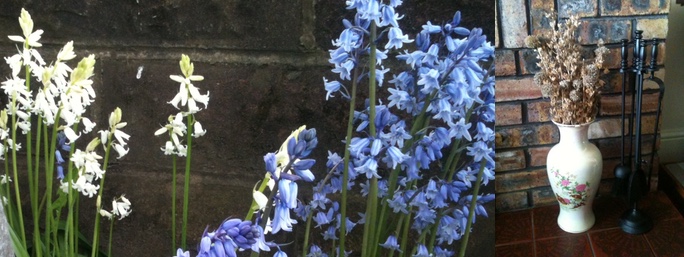When Bluebells Are Not Blue
11/05/15 21:25 Filed in: Garden

Mutant Bluebells have appeared in my front garden. Apparently they don't have to be blue, they can be white - or even pink!
The sight of albino Bluebells sent me to the bookcase to research why this was so and I discovered some interesting trivia. Apparently white or pink Bluebells (which is something of an oxymoron) aren't rare at all - though the standard blue Bluebell is by far the most prevalent. Bluebells can even be brown if they're left long enough. I left the dead flowers where they stood over the Winter and by Spring they'd dried out perfectly. The same was true of the Chives' flowers. I'm really pleased with them as a fireside arrangement.
I knew that it was a protected species but it's the digging up of the bulbs which is illegal - though there's no point in picking them as they droop within seconds! I wonder where the law stands on digging them up in my own garden - they certainly spread with vigour and I might decide I don't want them quite covering the whole flowerbed… I'm informed that this isn't where the real danger lies. It's the trampling down of the leaves that really threatens the survival of the Bluebell. Heavy footed sightseers do the most damage as the plants die from lack of nourishment if the leaves are crushed, but can happily survive without their flowers.
Bluebell bulbs were used to make glue at one time and also the starch found within the bulb was used to stiffen elaborate Elizabethan ruffs.
Now is the time to go for woodland walks to enjoy carpets of the British dainty - but don't tread on them!